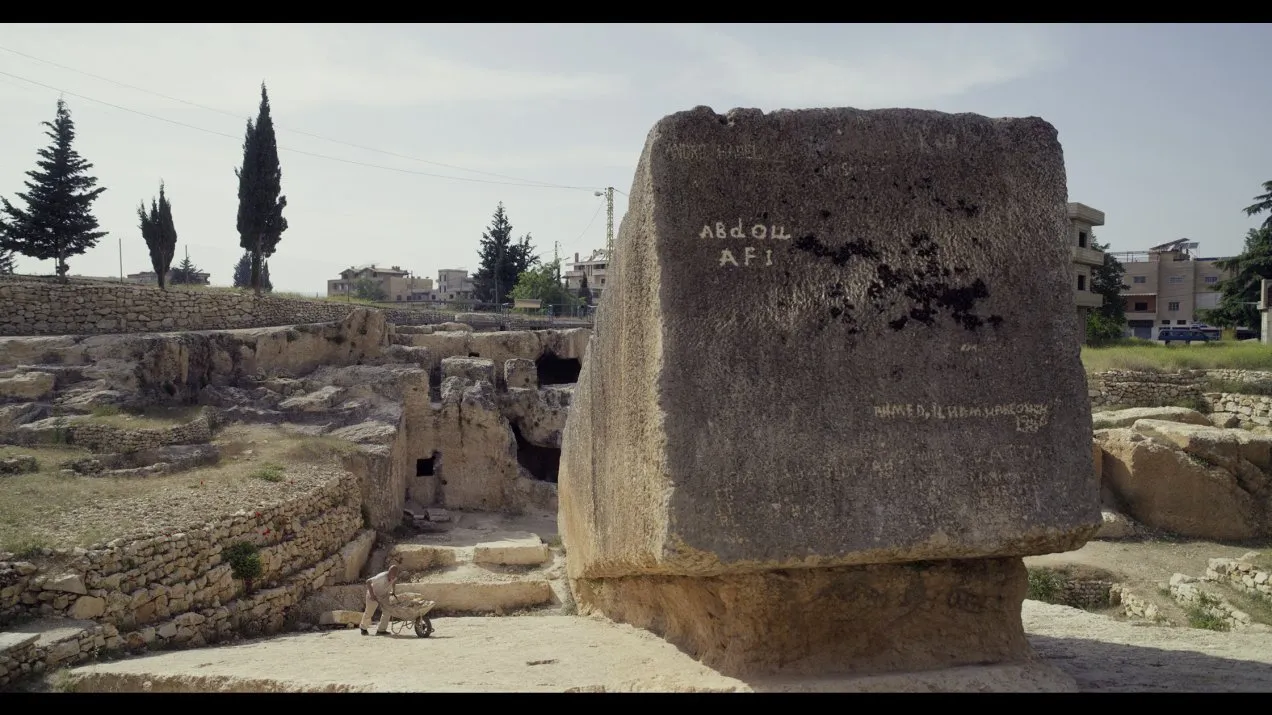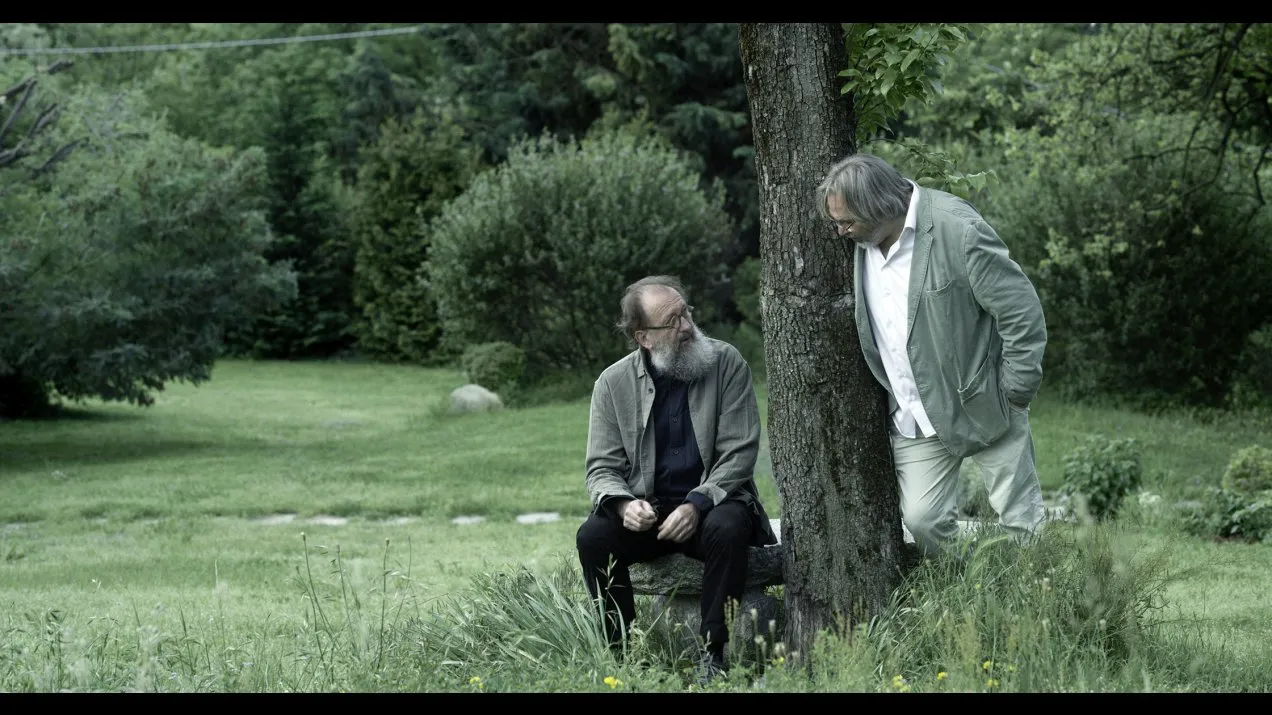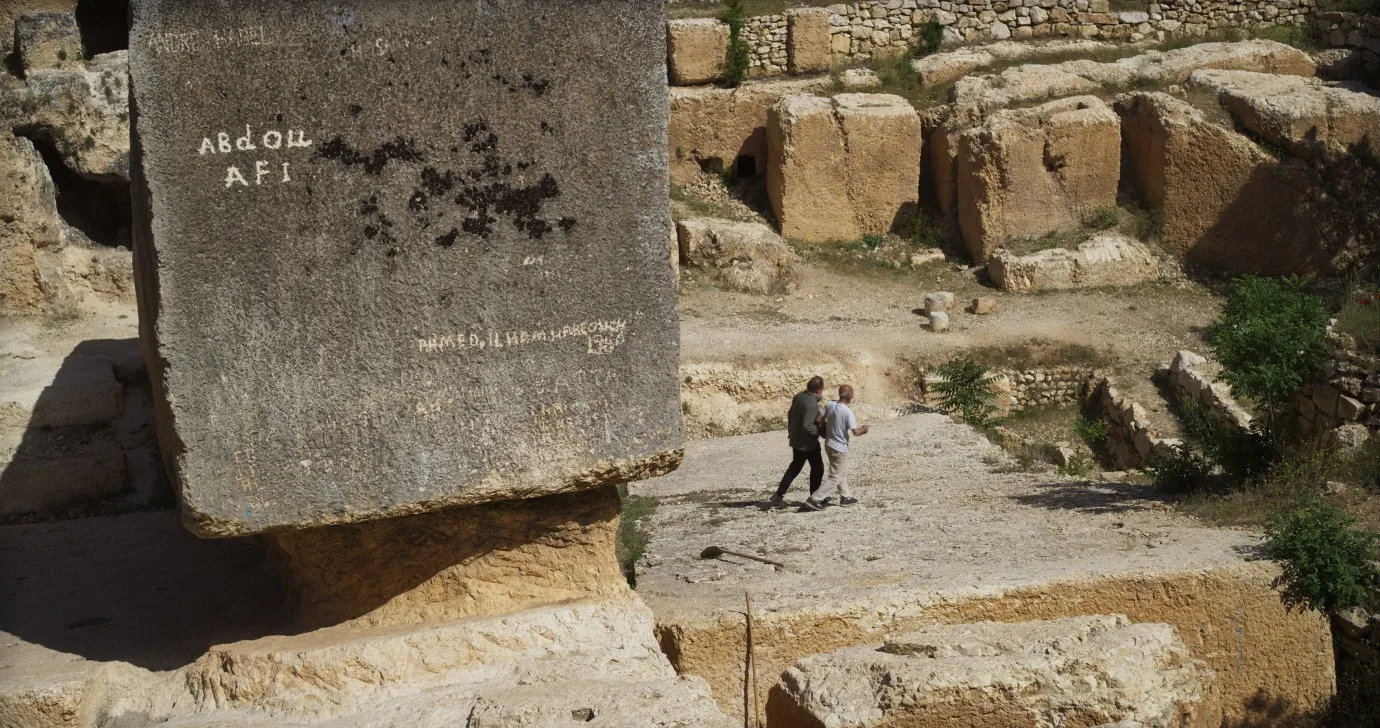Viktor Kossakovsky’s Architecton is not merely a documentary but a requiem for a civilization teetering between ambition and annihilation. Like Koyaanisqatsi stripped of its hypnotic gloss, the film unearths the grotesque poetry of human endeavor—where the arrogance of permanence clashes with the inevitability of decay.
Kossakovsky, whose lens has long fixated on humanity’s violent dance with nature (Gunda ’s slaughtered pigs, Aquarela ’s vengeful waters), turns his gaze to stone and concrete: materials we wield as testaments to progress, yet which ultimately entomb our hubris. Here, architecture is neither art nor utility but a mirror reflecting our existential dissonance—a paradox of fragility masquerading as strength.
The film’s premise is elemental: stone, the bedrock of ancient marvels (Baalbek’s monoliths, Greece’s temples), becomes complicit in modern ruin. Drone shots hover over Ukraine’s bombed husks and Turkey’s earthquake-shattered blocks, their skeletal remains echoing the cyclical futility of human ambition.
Amid this, Italian architect Michele De Lucchi constructs a stone circle in his garden—a futile altar to reverence, forbidden to humans except his dog. Kossakovsky’s camera lingers on avalanches of rock, quarries gnawing into earth, and concrete’s toxic alchemy, weaving a nonlinear meditation on creation as destruction.
The score, a dirge of drones and brass, throbs like a planet’s heartbeat, while silence amplifies the scream of collapsing walls. This is cinema as autopsy: dissecting how we build not for eternity, but for the satisfaction of fleeting control.
Fragments of Hubris: The Architect’s Mirror to Mortality
Kossakovsky’s cinema is a silent symphony—a visual lexicon where stone speaks and concrete screams. In Architecton , he abandons exposition, letting the earth itself narrate through fractured walls and avalanches of rock. His camera lingers on decay, not as a passive observer but as an archaeologist of human folly.
Like Aquarela ’s vengeful waters or Gunda ’s slaughtered swine, this film weaponizes minimalism: no interviews, no explanations, only the guttural hum of machinery and the groan of collapsing structures. The soundtrack—a dirge of drones and brass—becomes a chorus of the damned, echoing Heidegger’s warning that “only where there is world is there earth, and only where there is earth is there world.”
Kossakovsky’s philosophical indictment is etched into every frame. Ancient ruins (Baalbek’s monoliths, Greece’s temples) stand as monuments to reverence, their stones carved with a patience now foreign.
Modernity, meanwhile, erects transient tombs—Ukraine’s bombed apartments, Turkey’s earthquake-ravaged blocks—where concrete’s brittle arrogance crumbles into dust. The director contrasts these with a quiet fury: why do we build ugliness when beauty once endured? His lens lingers on Michele De Lucchi’s stone circle, a futile altar to permanence in a world addicted to disposability.
Here, Kossakovsky mirrors Heraclitus: “All is flux,” yet we cling to the illusion of control, constructing edifices that mock our own mortality. The film becomes a palimpsest of human narcissism—a question scrawled in rubble: What does it mean to build when all we touch turns to trash?
Ruins of Ambition: Mortal Hopes Cast in Stone
Architecton frames architecture as a necropolis of human intent—each structure a fossilized scream against oblivion. Ancient ruins (Baalbek, Greece) stand as monuments to reverence, their stones carved with patience that acknowledged time’s dominion. Modernity’s rubble (Ukraine, Turkey) mirrors hubris: concrete slabs crumble like brittle bones, their brief existence a testament to arrogance.
Kossakovsky contrasts these to expose civilization’s fragility—war-ravaged walls echo psychological fractures, while ancient ruins, weathered into grace, haunt us with what we’ve lost. The moral weight is visceral: we trade cathedrals of awe for bunkers of efficiency, poisoning planet and psyche. Heidegger’s “building dwelling thinking” collapses into a question: If we construct to defy mortality, what remains when walls fall?
Concrete embodies creation and decay. Its production devours mountains, choking skies with toxic dust—a Frankenstein’s monster meant to conquer nature, now consuming it. Michele De Lucchi’s guilt—his modernist designs reliant on ecological violence—anchors this paradox.
His stone circle, a futile altar to permanence, mirrors our tragic cycle: we build to assert control, yet each structure becomes a cenotaph for destroyed beauty. Kossakovsky’s lens lingers on quarries gnawing earth, their conveyor belts spitting rocks like teeth. Concrete, meant to defy time, accelerates entropy—a memento mori cast in gray sludge. The film leaves us adrift: our greatest monument to progress is a tombstone of dust.
Echoes in Stone and Sound: The Cinematic Symphony of Collapse
Kossakovsky’s lens transforms rubble into requiem. Drone shots hover like mechanical vultures over Ukraine’s shattered apartments and Turkey’s earthquake-flattened blocks, their skeletal remains framed not as relics of war or disaster but as indictments of human presumption.
The camera lingers on avalanches of rock cascading down cliffs—a visceral ballet of geological violence—each boulder a tumbling monument to entropy. Quarries yawn open like wounds, their fractured geometries echoing the jagged edges of our own ambitions.
In black-and-white sequences, abandoned towns emerge as ghostly palimpsests: cracked walls bloom with lichen, and vines strangle concrete skeletons, nature reclaiming its dominion with silent, inexorable fury. These images are neither documentary nor elegy but a cinematic autopsy, dissecting the hubris of permanence.
Evgueni Galperine’s score is a seismic hum—a subterranean growl of cellos and brass that mirrors the film’s existential tremors. Drones pulse like tectonic plates shifting beneath the narrative, while sudden brass eruptions pierce the silence, echoing the abrupt collapse of structures and ideals.
Diegetic sounds anchor the chaos: the metallic screech of stone-crushing machinery becomes a industrial heartbeat; the hiss of crumbling concrete, a whispered elegy. Together, they form a dissonant symphony—part requiem, part warning—where every roar of machinery or groan of collapsing stone feels like the planet itself gasping. Is this music a lament for what’s lost, or a premonition of what’s to come? Kossakovsky leaves the question unresolved, letting the dissonance linger like dust in the air.
The Architect’s Lament: Stone, Guilt, and the Fragility of Human Design
Michele De Lucchi, a spectral figure wandering through the wreckage of antiquity, embodies the film’s tension between reverence and recklessness. His pilgrimage to Baalbek’s monolithic stones—ancient sentinels that have outlasted empires—becomes a silent accusation.
Here, he traces the chisel marks of builders who sculpted permanence, their intent inseparable from the rock itself. In contrast, his own modernist creations, rendered in concrete, loom as transient as ash. The film lingers on his quixotic “stone circle,” a ritualistic act of atonement: a ring of raw rock erected in his garden, forbidden to humans save his dog.
This barren altar mirrors humanity’s fractured pact with nature—a gesture of humility in a world hellbent on domination. De Lucchi’s voice, gravelly and weary, decries the disposability of contemporary architecture: structures designed not for eternity but for obsolescence, their skeletal remains destined to join the rubble of Ukraine’s bombed apartments or Turkey’s earthquake-flattened towns.
De Lucchi’s confession arrives like a shudder. “Concrete is arid,” he murmurs, the weight of complicity etching lines deeper than any blueprint. His hands, which once shaped sleek facades, now tremble at the thought of concrete’s silent violence—the quarries stripped bare, the toxic dust choking lungs, the mountains reduced to gravel. Yet he refuses absolution.
The film frames his guilt as a microcosm of our collective sin: a civilization addicted to materials that devour the Earth. His plea for sustainable design is no manifesto but a fractured prayer, acknowledging that even “green” architecture risks becoming another tombstone if divorced from ethical reckoning. “What nourishes the planet?” he asks, the question lingering like a ghost. The answer, like the stone circle, remains stubbornly, tragically unresolved.
Erosion of Eternity: Time’s Unyielding Dialogue with Ruin
Kossakovsky’s Architecton unfolds like a tectonic plate—slow, inexorable, yet punctuated by seismic ruptures. The film’s rhythm mirrors geological time: glacial pans over ancient ruins stretch into minutes, their textures etched by millennia, while sudden cuts to explosions or landslides rupture the calm with visceral chaos.
This dissonance—between the eternal and the ephemeral—becomes a structural metaphor. The epilogue, a sparse dialogue between Kossakovsky and De Lucchi, lingers in uncertainty. Their exchange feels less like a resolution than a confession: two figures adrift in the chasm between human ambition and cosmic indifference.
De Lucchi’s guilt over concrete’s toxicity hangs unresolved, while Kossakovsky’s camera lingers on rubble, as if waiting for the dust to settle into answers. The pacing, at times, risks stagnation, yet this mirrors the film’s thesis: we are mired in cycles of creation and destruction, unable to escape the weight of our own debris.
Architecton stakes its claim alongside Koyaanisqatsi as a cinematic jeremiad, though its fury is quieter, more funereal. It does not preach but immerses, demanding we sit with the grotesque beauty of our own undoing.
The film’s legacy lies in its visceral provocation—a call to interrogate how we etch ourselves into the earth. What lingers is not despair, but a paradoxical hope: that by confronting the fragility of our monuments, we might yet sculpt a humility as enduring as stone.
The Review
Architecton
Architecton is a visceral, philosophically charged elegy for humanity’s fractured relationship with permanence. Kossakovsky’s fusion of stark visuals and existential inquiry—juxtaposing ancient stone’s endurance with modern concrete’s fragility—demands introspection. While its meditative pacing may unsettle some, the film’s audacity to frame destruction as both art and indictment resonates deeply. A haunting call to reimagine our footprint on Earth.
PROS
- Visually stunning cinematography
- Philosophical depth and environmental urgency
- Innovative sound design and score
- Ambitious global scope
- Timely critique of modern architecture
CONS
- Slow pacing may alienate some viewers
- Abstract structure lacks clear resolution




















































